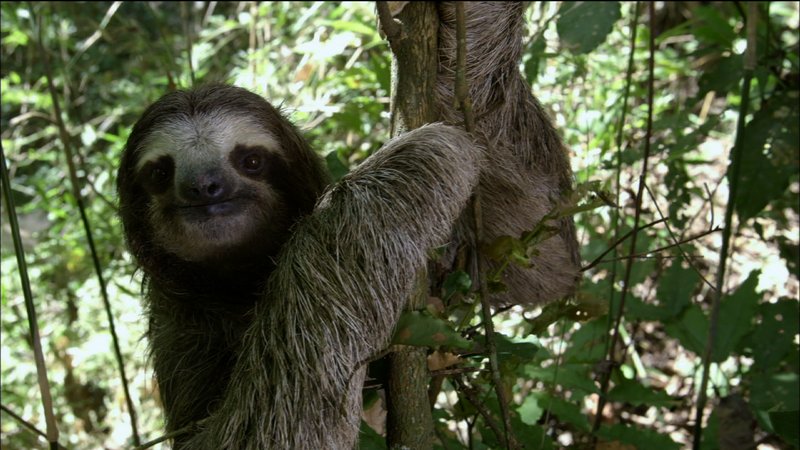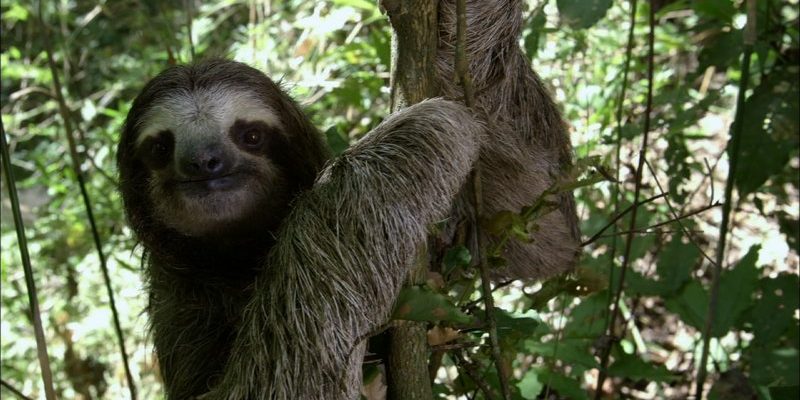
You might wonder, “What difference can a slow-moving animal make?” Well, even the smallest players can have a big impact. Sloths contribute to their ecosystem in ways that might surprise you. Their unique behaviors, coupled with their interactions with other species, help maintain the health of their environment. Let me explain how these charming creatures fit into the larger picture.
What Sloths Eat and Their Role in Plant Life
Sloths are herbivores, which means they primarily feast on leaves, fruits, and flowers. But it’s not just a casual snack; their diet is quite specific. These creatures typically munch on *tender leaves* from trees like the cecropia and the guanacaste. By consuming these leaves, sloths help control foliage density and promote new plant growth. It’s a bit like a gardener who keeps plants in check while allowing fresh sprouts to emerge.
Additionally, sloths are essential for seed dispersal. As they eat fruit, they inadvertently swallow seeds that later get excreted in different locations. In theory, this means that sloths help in the growth of new plants farther away from the parent tree, promoting biodiversity in their habitat. You might think of them as little gardeners who spread seeds as they lounge around.
The Sloth’s Relationship with Other Wildlife
Sloths don’t just hang out on their own; they have some unique interactions with other creatures. For example, they host various species of algae on their fur. This algae not only provides camouflage for the sloth, helping it blend into the trees, but it also becomes a food source for moths and other insects. It’s a symbiotic relationship that benefits everyone involved—sloths get to hide from predators, while the algae and insects get a free ride in the forest.
Moreover, by supporting various life forms, sloths indirectly contribute to the health of the entire ecosystem. When moths and insects flourish, they can serve as food for larger animals—creating a ripple effect throughout the food chain. So, the next time you see a sloth, remember that it’s more than just an adorable creature; it’s a life-sustaining partner for many other species.
Sloths as Indicators of Forest Health
Believe it or not, sloths can also tell us a lot about the health of their ecosystem. Because they are sensitive to changes in their environment, their presence (or lack thereof) can indicate the state of the forest. If sloth populations dwindle, it might signal that something is wrong—like deforestation or habitat loss.
This sensitivity is vital for conservationists. By monitoring sloth populations, they can gauge ecological health and take action to protect these environments. In a way, sloths are like a canary in the coal mine; their well-being reflects how well the forest is doing overall. If you think about it, it’s a pretty big responsibility for such a slow-moving creature.
The Role of Sloths in Nutrient Cycling
Nutrient cycling is essential for maintaining a thriving ecosystem, and sloths have a hand in that too. When sloths defecate, they release nutrients back into the soil. These nutrients help support plant growth, which in turn feeds other animals and continues the cycle of life.
Interestingly, sloth poop is often a rich fertilizer, full of nutrients that plants love. This means that sloth droppings can boost the growth of surrounding vegetation, which is crucial in a densely populated rainforest. The more plants there are, the more oxygen is produced, and the healthier the ecosystem becomes. Who knew that even their bathroom habits could be so beneficial?
Conservation: Protecting Sloths and Their Ecosystem
Sadly, sloths face numerous threats that can impact their role in the ecosystem. Habitat destruction due to logging, agriculture, and expansion of urban areas are significant concerns. When their homes disappear, so does their ability to contribute to the ecosystem effectively.
Conservation efforts are vital to ensure that sloths can thrive in their natural habitats. Protecting forests means protecting not only sloths but also countless other species that rely on those ecosystems. You might be wondering what you can do to help. Supporting conservation organizations, advocating for wildlife protection laws, and spreading awareness about these unique creatures can make a real difference.
Why Sloths Matter to Us
So, why does all this matter? Well, sloths are more than just adorable animals; they’re key players in an intricate web of life. Their existence helps maintain the balance of their ecosystem, which ultimately impacts our planet’s health. Healthy ecosystems lead to cleaner air, better water quality, and more stable climates.
By understanding the role of sloths in their ecosystem, we can foster a deeper appreciation for the natural world. Every creature, no matter how small or slow, contributes to the health and richness of our planet.
In conclusion, sloths may seem like the slowpokes of the animal kingdom, but they have an essential role in their ecosystem. From nourishing plants to helping other wildlife, they keep the forest thriving. Let’s cherish these unique creatures and do our part to protect them and the habitats they call home. It’s all connected, and it starts with understanding just how invaluable sloths really are.

